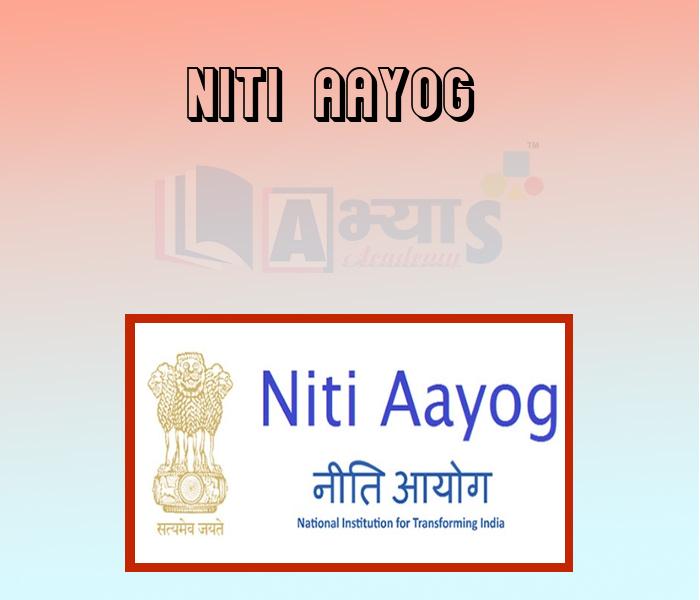NITI Aayog

NITI Aayog
NITI AAYOG (National Institution for Transforming India):
The NITI Aayog, is a think tank of the Government of India, established on 1 January 2015 as are placement for the Planning Commission. . The Prime Minister serves as the Ex-officio chairman, and the first meeting of NITI Aayog was chaired by Narendra Modi on February 8, 2015.
NITI AAYOG National Institution for Transforming India
Chairman - Prime Minister
Vice Chairman - Dr. Rajiv Kumar (Economist)
CEO:- Planning Commission Secretary Mr. Amitabh kani - have been appointed as CEO of the NITI Aayog.
Full Time Member - Mr. Bibek Debroy (Economist Mr. V.K. Saraswat (Former DRDO Chief), Ramesh chand (Agricultural Expert), Dr. V.K. Paul (Professor and Public health Expert)
Ex-Officio Member - Mr. Rajnath Singh, Mr. Ani Jaitely, Mr. Suresh Prabhu, Mr. Radha Mohan Singh.
Special Invites - Mr, Nitin Gadkari, Prakash Javadekar, Mr Tanwar Chand Gehlot
NITI Aayog has replaced the previous Planning Commissions Of India
The Main Objectives of NITI Aayog:
Who grants final approval to the Five Year Plan in India ? | |||
| Right Option : C | |||
| View Explanation | |||
Students / Parents Reviews [10]
Abhyas is a complete education Institute. Here extreme care is taken by teacher with the help of regular exam. Extra classes also conducted by the institute, if the student is weak.

Om Umang
10thA marvelous experience with Abhyas. I am glad to share that my ward has achieved more than enough at the Ambala ABHYAS centre. Years have passed on and more and more he has gained. May the centre flourish and develop day by day by the grace of God.

Archit Segal
7thIt was a good experience with Abhyas Academy. I even faced problems in starting but slowly and steadily overcomed. Especially reasoning classes helped me a lot.

Cheshta
10thIt was good as the experience because as we had come here we had been improved in a such envirnment created here.Extra is taught which is beneficial for future.

Eshan Arora
8thMy experience was very good with Abhyas academy. I am studying here from 6th class and I am satisfied by its results in my life. I improved a lot here ahead of school syllabus.

Ayan Ghosh
8thBeing a parent, I saw my daughter improvement in her studies by seeing a good result in all day to day compititive exam TMO, NSO, IEO etc and as well as studies. I have got a fruitful result from my daughter.

Prisha Gupta
8thIt has a great methodology. Students here can get analysis to their test quickly.We can learn easily through PPTs and the testing methods are good. We know that where we have to practice

Barkha Arora
10thI have spent a wonderful time in Abhyas academy. It has made my reasoning more apt, English more stronger and Maths an interesting subject for me. It has given me a habbit of self studying

Yatharthi Sharma
10thMy experience with Abhyas academy is very good. I did not think that my every subject coming here will be so strong. The main thing is that the online tests had made me learn here more things.

Hiya Gupta
8thAbhyas Methodology is very good. It is based on according to student and each child manages accordingly to its properly. Methodology has improved the abilities of students to shine them in future.









